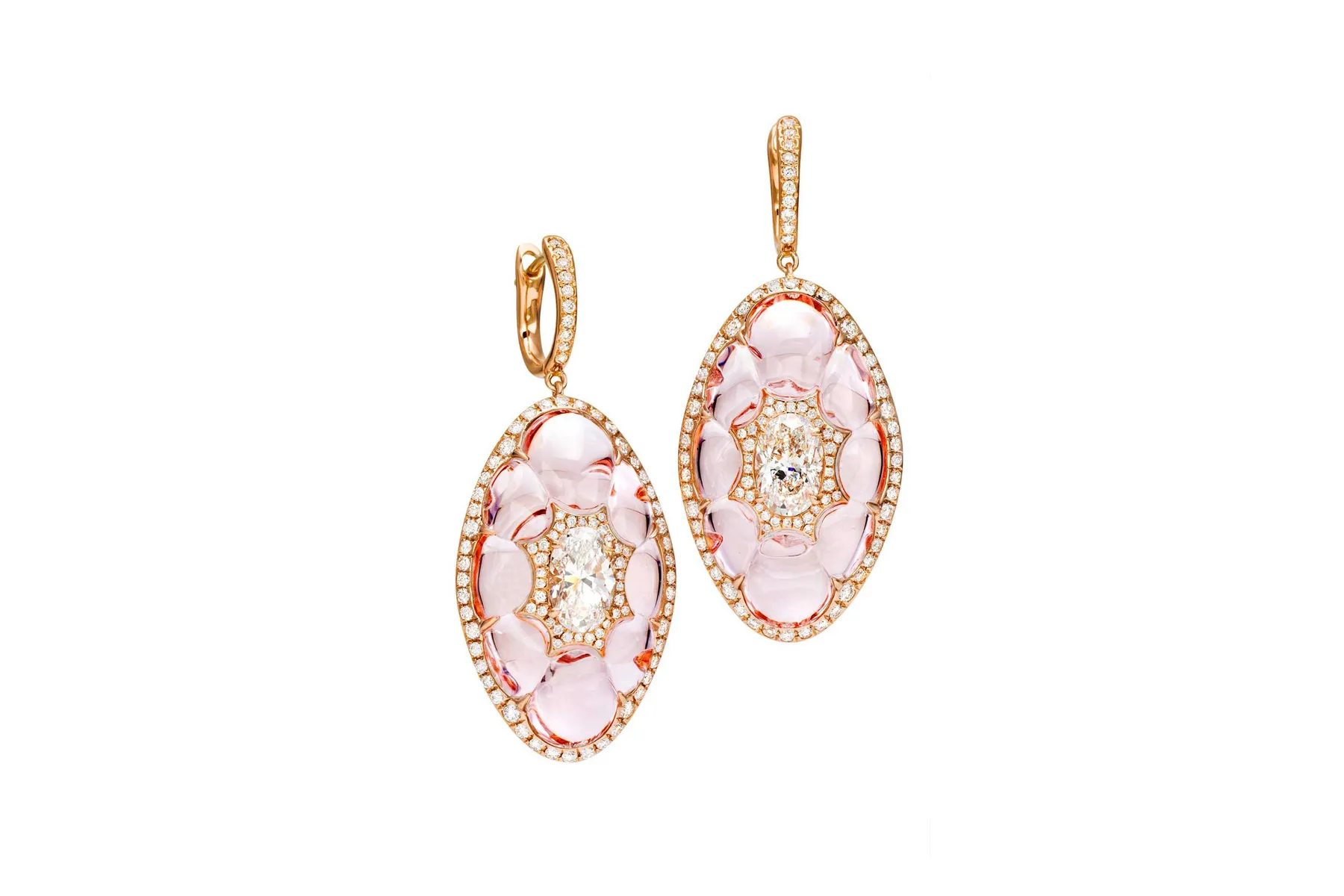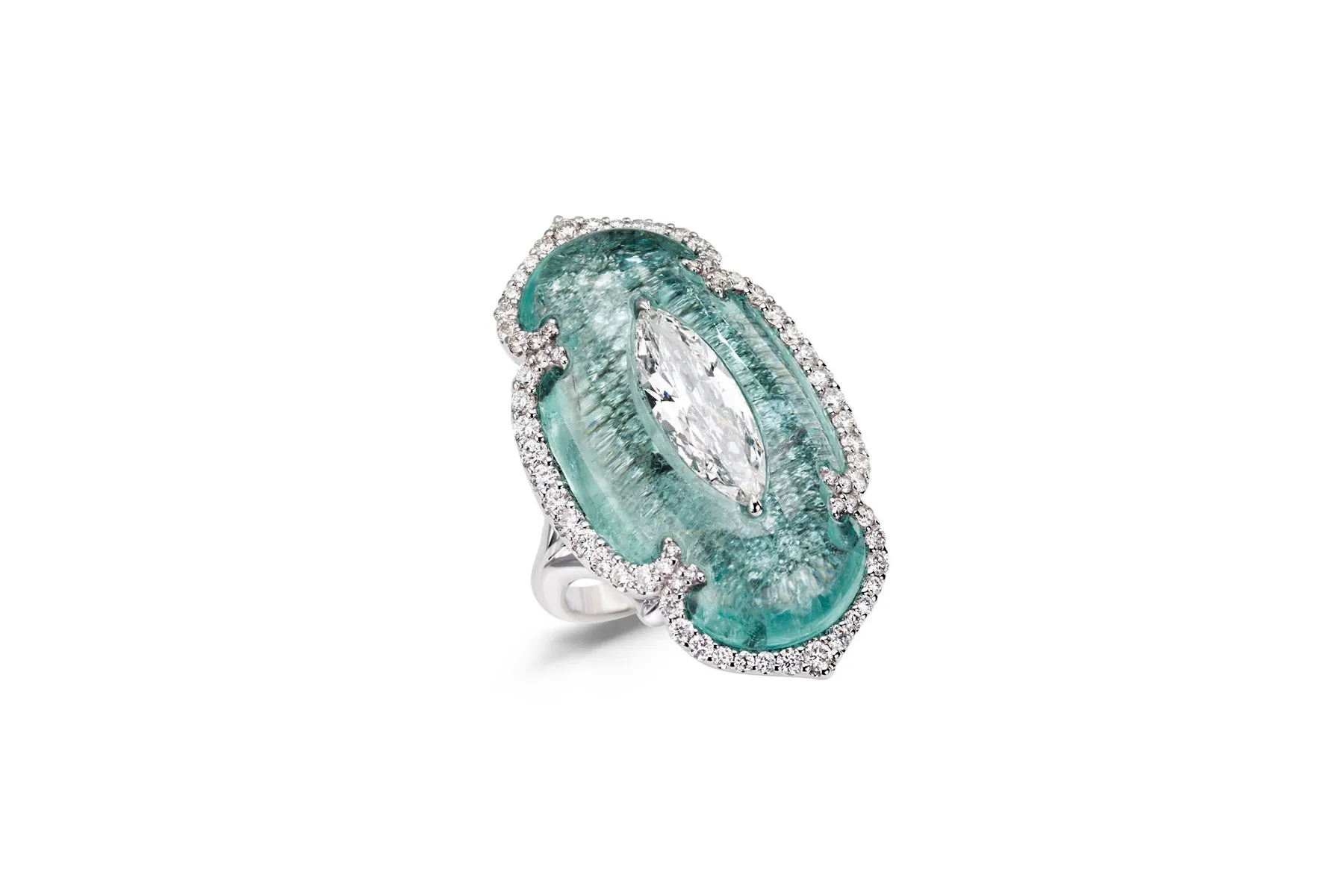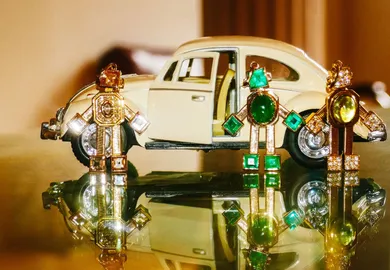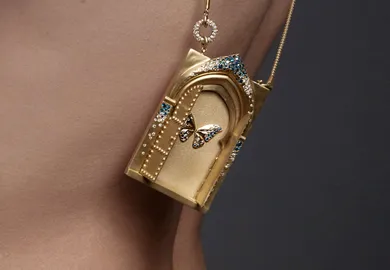

Trend: Ancient Jewellery Making Techniques – Part I
Ancient jewellery making techniques such as enamelling, inlay and gold etching have stood the test of time, and are coming to the fore in modern collections. As an overall market trend for finely crafted luxury items with genuine workmanship overtakes mass produced jewellery, so designers all over the world marry the old and the new to create visually intriguing pieces crafted using some ancient techniques.
One of the most popular ways to embellish precious jewels is undoubtedly enamel, and one of the most famous jewellery artists who implements this technique is Ilgiz Fazulzyanov. His unique creations owe a debt to the masters of enamel such as René Lalique and Georges Fouquet, whilst creating contemporary fine jewellery that balances the delicacy and beauty of enamel with large, bold gemstones. He is able to create an impressive spectrum of colours and use them to create gradients of hues that make his masterpieces look like precious canvases.
Alice Cicolini incorporates enamel decoration with a different approach: using patterns and geometric shapes which accentuate the fine jewellery pieces, and bring vivid colour to her yellow gold jewellery. Known in Europe as champlevé, the Indian meenakari enamelling tradition which Alice employs involves engraving pattern into the metal directly. Alice Cicolini’s work “aims to go some way towards providing a large-scale platform of expression for this extraordinary tradition.”
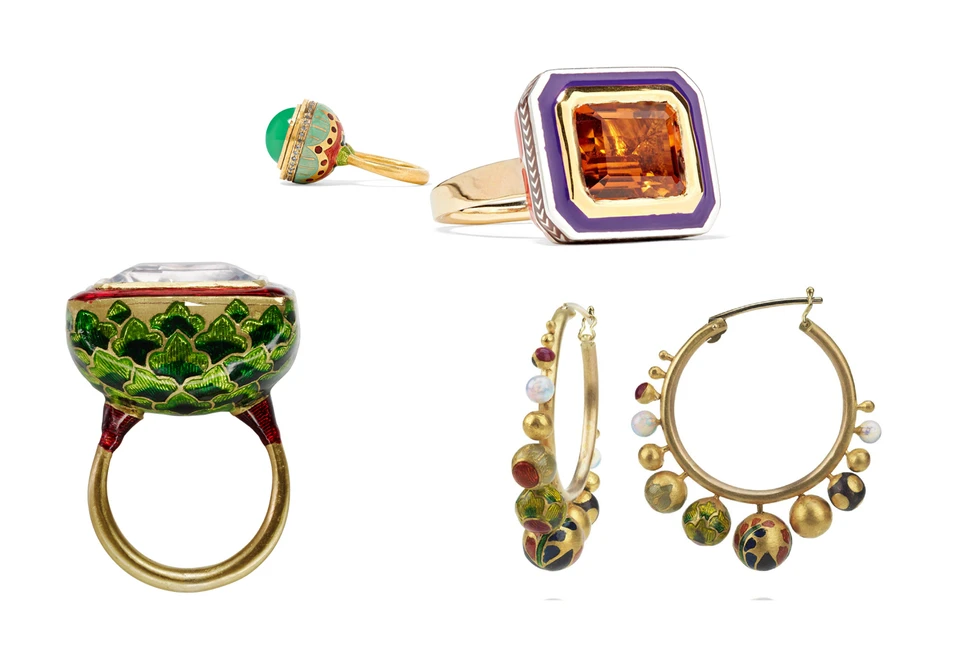
A selection of Alice Cicolini champléve enamel jewellery with gemstones in yellow gold
When it comes to ancient techniques, the art of inlay is one which somehow manages to appear modern despite its long history. Originating in ancient Egypt, each stone is meticulously carved before being set directly into another. The name Boghossian has already become synonymous with inlaid gems; particularly showcased in their high jewellery creations with mother of pearl inlay. This Swiss Maison has managed to elevate the inlay process to an extreme that could have never been imagined 5000 years ago.
Veschetti utilise both enamel and inlay to create their most recognisable fine jewellery pieces. They nest statement diamonds, sapphires, turquoise, jade, mother of pearl and many other gemstones inside voluminous convex rings and earrings, often with a sharp contrast in the colour combination between the gems.
These are some of the jewellery making techniques which are upholding traditions spanning thousands of years of civilisation; people have always sought to create beautiful things, and the production and enjoyment of fine jewellery continues to be at the forefront of this intrinsically human need. Look out for the upcoming second article on this trend, where I will discuss the best jewellery artists in engraving, intaglio, cameos and filigree.

WORDS
Jodie Smith is a San Francisco based writer, trend forecaster and creative consultant specialising in the jewellery and luxury industries.






